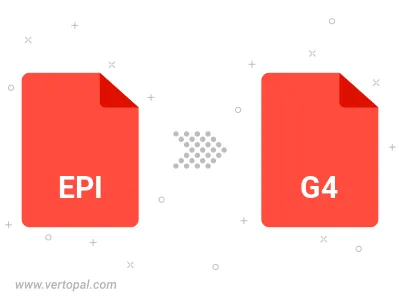Convert EPI to G4
Convert EPI images to G4 format, edit and optimize images online and free.

The EPI file extension stands for Encapsulated PostScript Interchange, a format developed by Adobe in the late 1980s. It facilitates the integration of vector graphics and text into documents for high-resolution printing. EPI files, a variant of EPS, are primarily used in graphic design and desktop publishing to ensure consistent and scalable image quality. This format employs Adobe's PostScript language to describe the appearance of a single page, making it ideal for embedding illustrations in various documents.
The G4 file extension, standing for CCITT Group 4 Fax Image, is a specialized format used primarily for storing black-and-white facsimile (fax) images. Its origins trace back to the Consultative Committee for International Telegraphy and Telephony (CCITT), now known as the ITU-T, which developed the Group 4 standard in the 1980s to improve fax transmission efficiency over digital networks. This format employs a high compression ratio to reduce file size while maintaining image quality, making it ideal for archiving documents and transmitting faxes in professional and business environments.
Drag and drop or manually select the EPI file from your system.
Customize the EPI to G4 conversion using available tools before confirming.
Finalize the G4 image conversion and proceed with downloading the file.

The Vertopal CLI ensures reliable conversion of EPI image into G4 image formats.
cd to move into the EPI directory or include the path.